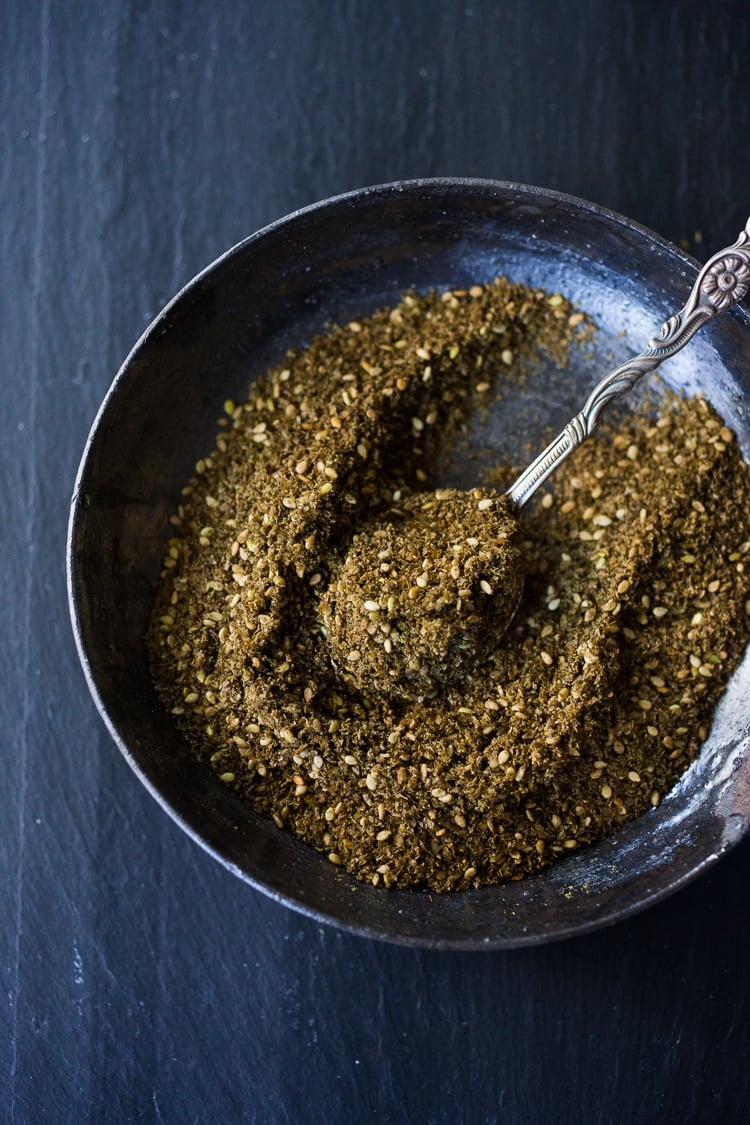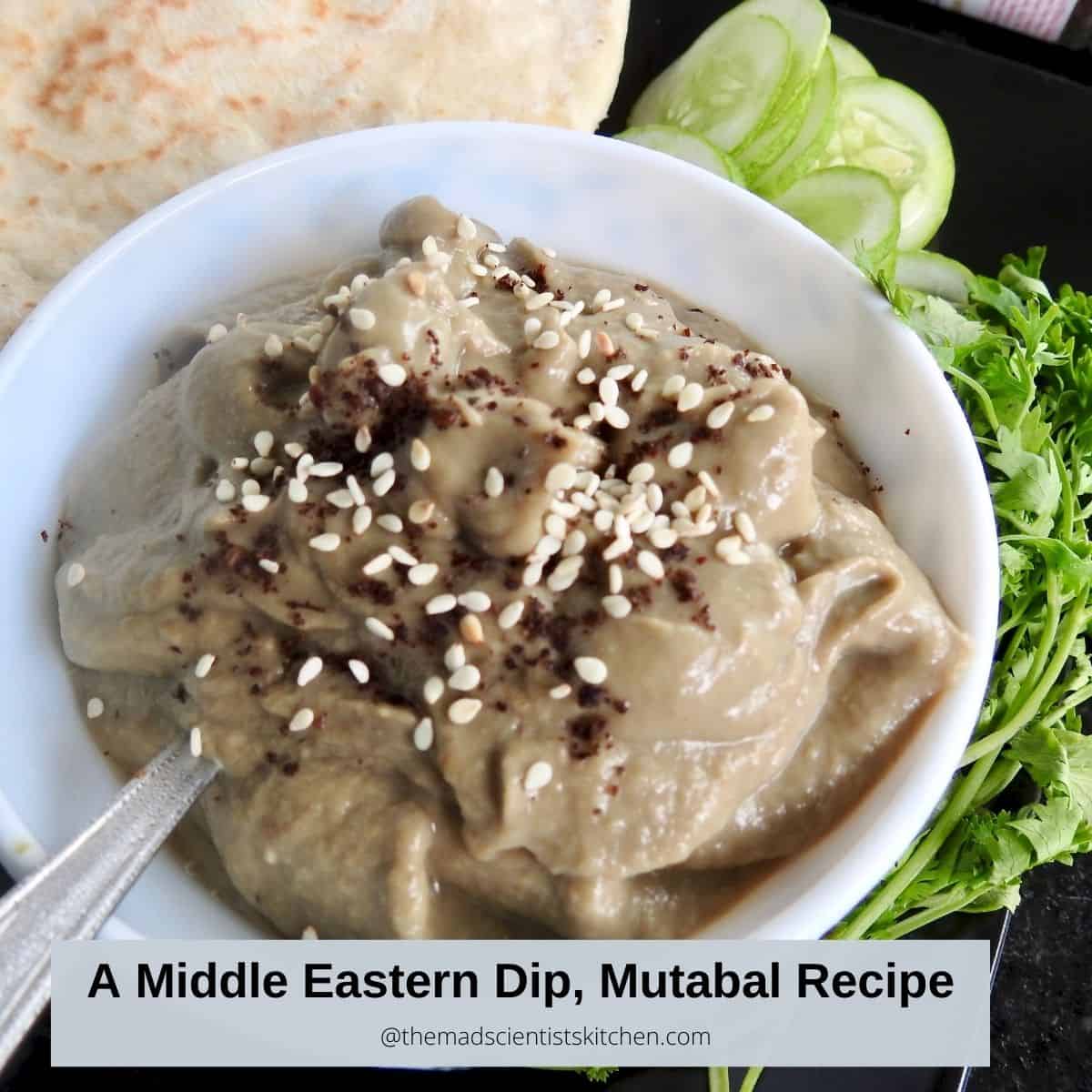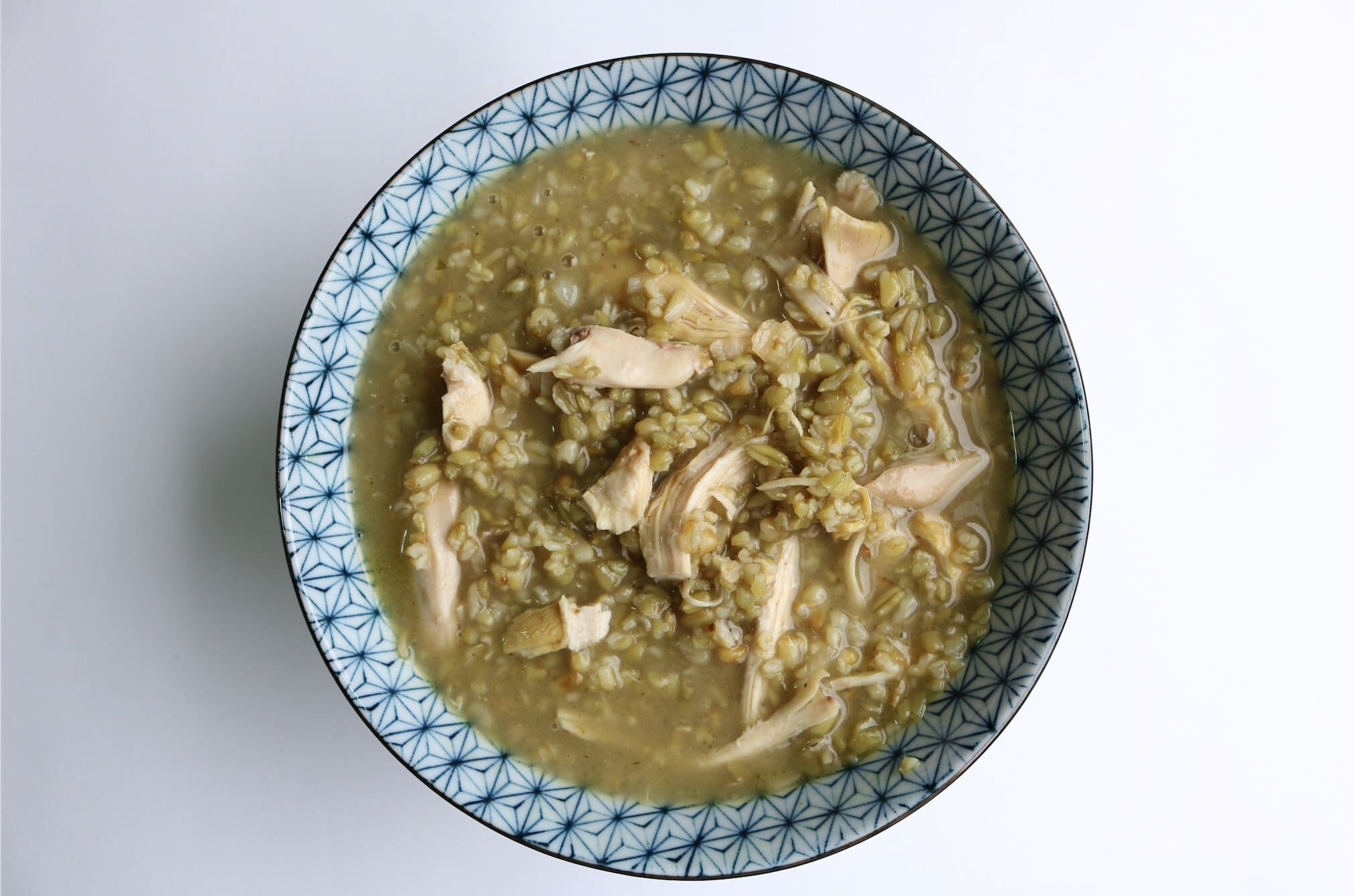Crushingly Delicious Jordanian Food That You MUST Try
At the crossroads to Asia, Africa and Europe nestles the country officially known as the Hashemite Kingdom of Jordan. Most of us just know it as Jordan, an oasis of stability in the sometimes turbulent Middle East.
Really, don’t panic about visiting middle eastern countries – not all of them are war torn and dangerous.
The country takes its name from the River Jordan, the main tributary into the famous Dead Sea. Jordanians pride themselves on their hospitality and of course like many cultures, food plays a huge part in that. Meals are often served mezzo style with lots of little dishes you might recognise like baba ganoush, falafel, hummus and halloumi and a whole load more which might be new to you.
This post will walk you through the best and most commonly eaten middle eastern delicacies and Jordanian dishes so you can confidently tuck in when visiting this fabulous region.
Jordanian Food Dishes That You HAVE To Try
Find out all you need to know about Jordanian Cuisine, what Jordan’s national dish is and what delicious sides you can order before heading out to Jordan to make sure you have an amazing foodie experience (and some mouth watering flat lay pics to share on Insta.)
If you are thinking of visiting Jordan it’s useful to know what to expect food-wise, especially if you have dietary requirements for allergy, lifestyle or religious reasons.
Exploring Jordan on a guided tour can mean you can make the most of your trip with the guide ensuring you have an amazing time and the best experience possible. You might even get to see and do stuff not usually offered to common or garden tourists.
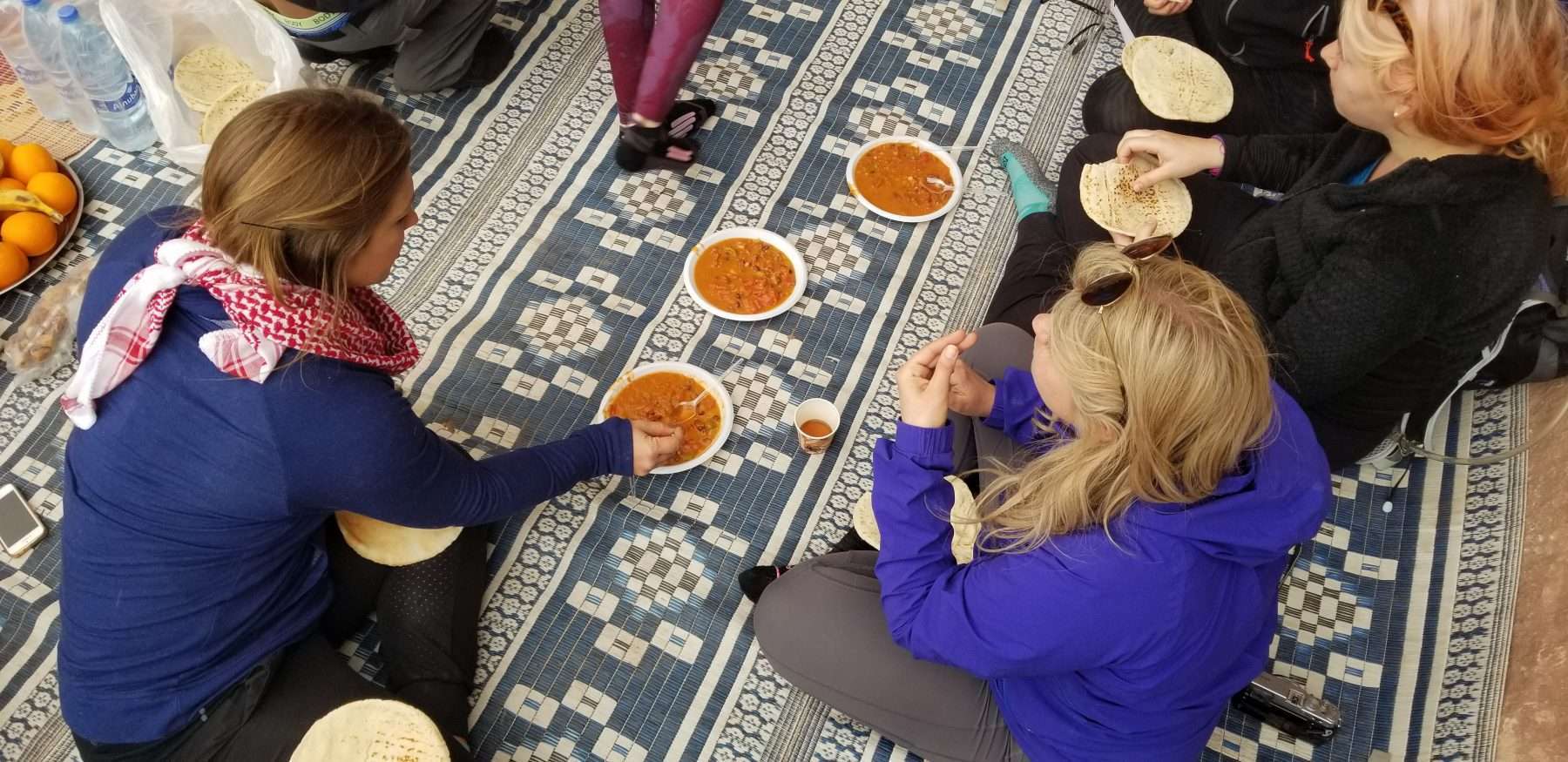
Explorer Chicks offer the ultimate Jordan and Petra tour where you can don your Indiana Jones hat to hike portions of the Jordan Trail, ride camels in Wadi Rum, float in the Dead Sea, and glamp under desert stars at an authentic Bedouin camp. You will even cook Jordanian food led by a culinary school owned and run by women. In short, make some cool new gal pals and get VIP access to the best historical, cultural and geographic sites all while being supported by an experienced leader.
Raving about their recent trip, Explore Chicks said that EVERYONE loved the Arak punch at the Cave Bar in Petra and the traditional Jordanian dish, mansaf.
What now? Don’t worry – I’ll fill you in on the delicious details later.
Traditional Jordanian Food
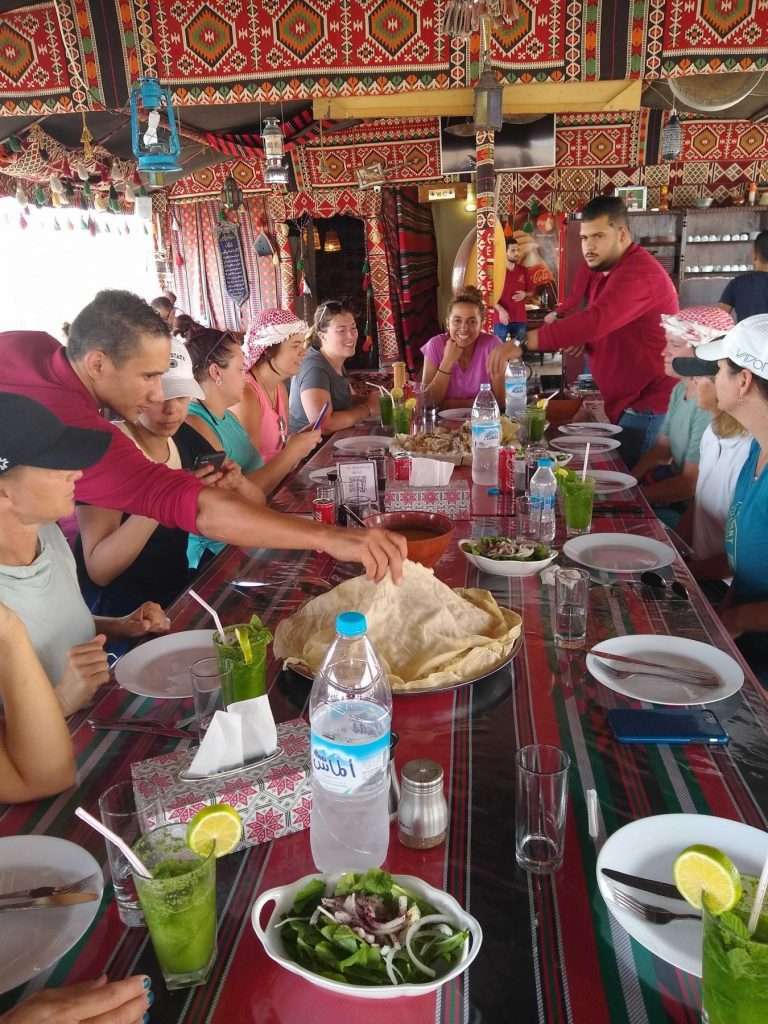
Like many countries many Jordanian recipes draw inspiration from the different cultures who have made a home there. Jordanian cuisine is heavily influenced by the traditional flavours of Turkish food and of the former Ottoman Empire. Throw in flavours from Armenians, Iraquis, Palestinians, Syrians and Circassians and you have amazing food to suit all tastes with many dishes suitable for vegetarians and vegans.
Olives have been grown in Jordan for thousands of years so it’s not surprising that olives and olive oil play a huge part in Jordanian cuisine. In northern Jordan and central areas at higher elevations where there is more rainfall, as well as olives farmers grow wheat, barley, lentils and chickpeas and pine nuts (which come from inside pine cones).
Ground chickpeas are vital for that tasty hummus, of course, which in Jordanian cuisine is eaten from any meal from breakfast to dinner! In the more fertile Jordan Valley, agriculture focuses on fruit and vegetables. It’s really easy to eat locally sourced delicious food when visiting Jordan.
Did you know? Bulgar is made by parboiling whole wheat, drying it and then grinding it to the required size. Jordanians love a vegan lentil and bulgar pilau, called Mujaddara, made with caramelised fried onions, pine nuts and olive oil.
Herbs and spices are crucial to make an authentic Jordanian meal and probably the most famous of the herb blends used in Jordanian cuisine is za’atar.
Za’atar Spice is a blend of savory dried herbs like oregano, marjoram or thyme, and toasted earthy spices like cumin and coriander, with sesame seeds, salt and the most important ingredient of all… sumac.
Sumac is made from dried berries and is used for flavouring food with a kind of lemon/lime flavour, as a dye and as a medicinal plant. One traditional flat bread, manakish/manquish/managish (depending where you are!) features za’atar mixed with olive oil and spread onto the flat bread dough before baking. Sometimes a white cheese like feta is added to make this extra-tasty.
Jordanian Breakfast
Breakfast is the most important meal of the day, they say and that’s true, especially if you have a day of exploration and adventures ahead of you. In Jordan, breakfast is usually a hearty meal, guaranteed to see you through any climbing or hiking you might have planned for the day.
The exact meal varies from region to region, plus I am sure there are those who wake up and grab a bowl of cornflakes just as most Brits don’t actually eat a traditional English fried breakfast every day.
However, if you want to immerse yourself in Jordanian culture you should definitely try a traditional breakfast at least once during any visit. One traditional dish served at breakfast time is fuul, boiled broad/fava beans mashed with lemon juice, olive oil and chopped chillis, eaten hot. Suitable for vegetarians and vegans, fuul is usually served with a long ladle from a distinctive bulbous cooking jar along with pita bread, hummus, salad, vegetables….a veritable feast!
Jordanians usually eat early so be prepared for a pre-8am breakfast. Lots of Jordanians eat what we might not consider breakfast. Baklava, falafel and labneh, a thick yoghurt paste tasting a little like sour cream spread onto freshly made bread. You might also spot little Arabic pizza type snacks and deep fried pastries filled with cheese, spinach, potato and occasionally meat being sold in Jordanian restaurants and cafes. They also sell pastries as street food but don’t be tempted to eat on the go however as eating in public is considered offensive.
Jordan is a predominantly Muslim country so during Ramadan many locals, hotels and restaurants will organise a sunrise breakfast with special decorations, music or other entertainment.
They will usually eat with their left hand in the Islamic tradition but don’t panic, no-one will judge you (much) if you accidentally use the “wrong” hand to scoop up lashings of tasty hummus with taboon bread, a type of bread cooked in a taboor/tandoori oven.
FYI, middle eastern cuisine is loaded with different breads so this might be a good time to turn a blind eye to that low carb diet because often bread is used instead of cutlery to eat. Sounds good to me – less washing up!
Mansaf
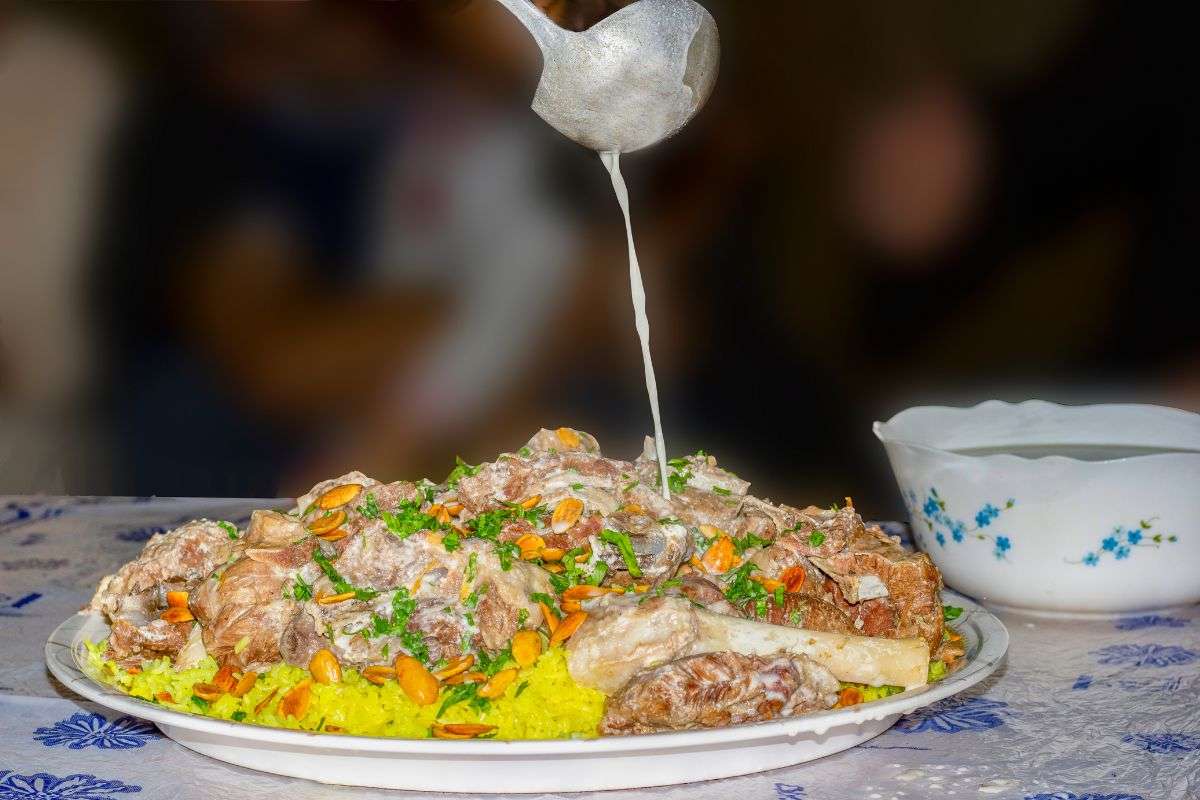
Mansaf, translated to English “big dish”, is the Jordanian national dish. It’s believed to be rooted in an ancient Bedouin recipe called thereed, often being made with camel meat. Today with cultural influences from all over the world causing the recipe to evolve with lamb or mutton, now usually the meat in this milky mountain of rice, bread.
Jordan’s national dish is cooked with or topped with a yogurt sauce, lambda jameed, made with jameed, a dehydrated salty yoghurt made from goat’s milk and formed into hard balls which are reconstituted with water.
Cooks take the broth of the lamb that has boiled for many hours using different spices and add it to the Jameed to make a white sauce. Then on a large serving platter the dish is layered with shredded pieces of a thin flatbread, thinner than a tortilla, called markook. Some of the Lambda Jameed might be ladled over the bread before adding a mound of rice, chunks of lamb and plenty more sauce. The dish is served hot, sometimes garnished with fried pine nuts or slivers of almond.
Moutabel
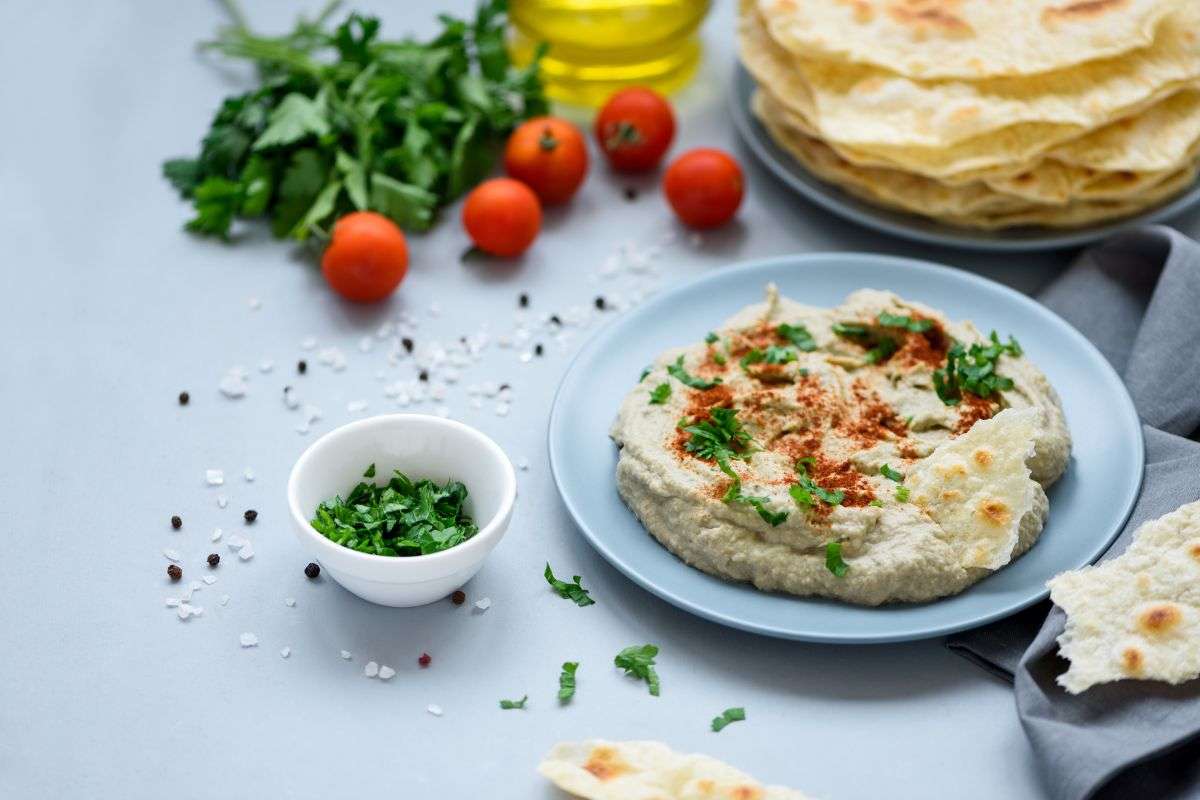
Many people have heard of baba ghanoush, a staple of middle east cuisine and the Jordanian moutabel is similar in many ways but also quite different. OK you are just gonna have to trust me on this. Like baba ghanoush, moutabel is an eggplant dip but unlike BG moutabel uses yoghurt in the recipe. Basically the eggplant is roasted , usually over open fire to give a smoky taste and smooth consistency, then peeled and combined with the yoghurt, tahini sauce and lemon juice. It makes an excellent side dish served cold, maybe with grilled meat or even more bread!
Fattet Hummus
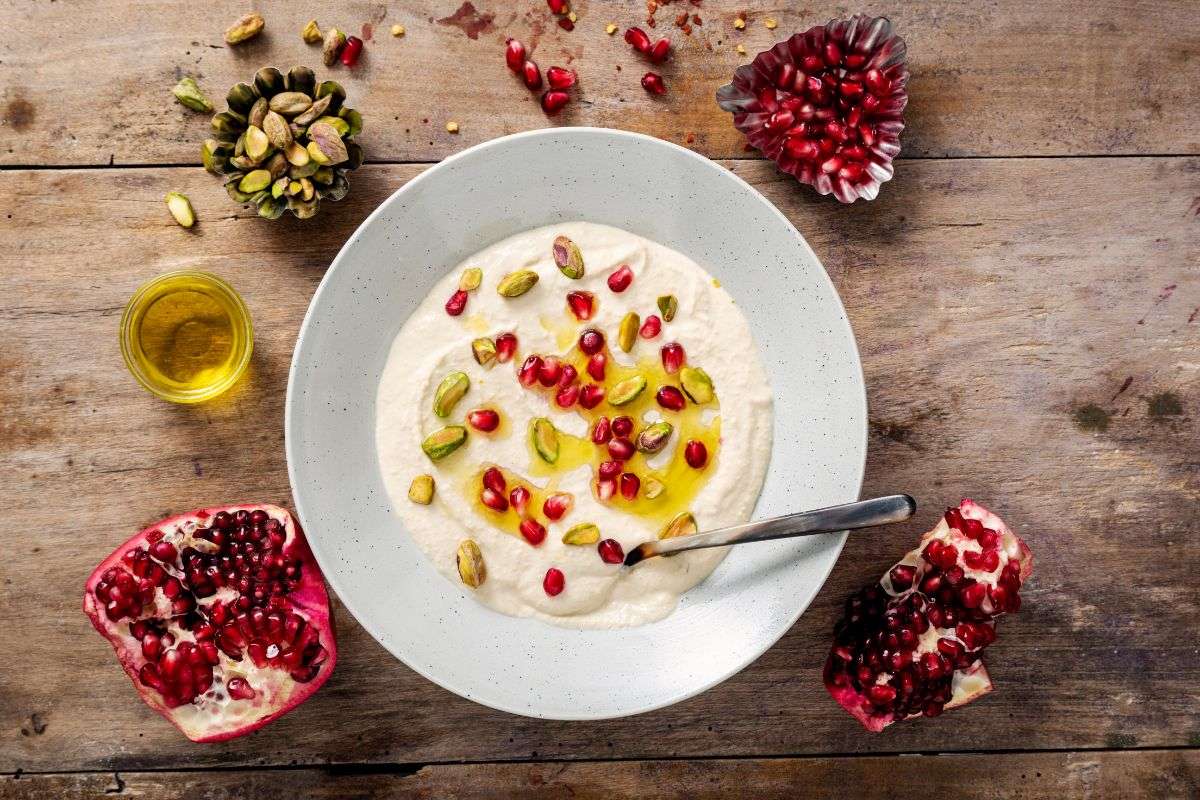
Jordanians have turned making hummus almost into an art form and seriously, if you visit the country you should totally make it your mission to try as many hummus dishes as possible to find the perfect one. Of course, the hummus recipe is pretty much the same but it’s the way people blend tahini, lemon juice, chickpeas and olive oil in their own way which makes every batch unique.
Fattet Hummus takes this humble dish and gives it a shiny crown. Bread is soaked in broth until it is completely dissolved mush and then it is mixed with hummus, more tahini and lemon juice. It tastes much like hummus but is nowhere near as dense but fluffy and airy like a whipped cream. You will see variations around Jordan and if you search the recipe online. Famous Brit cooking queen Nigella adds green chili pepper and pomegranate, pine nuts and mint to her version and serves it hot.
Athan Al-shayeb
I’ve included this because I love the translation of athan al-shayeb which I’m told means “the ears of the old grey-haired man”. Admittedly, that doesn’t sound too appetising but actually it’s a delicious kind of ravioli stuffed with ground meat, usually ground beef, and spices. Also known as shisbarak, the thin wheat dough parcels are cooked fresh with jameed (that salty yoghurt mentioned earlier) and served hot.
Tea and Coffee
It sounds mundane but tea and coffee are a vital part of Jordanian hospitality and indeed of daily life and you WILL be offered one or both of these beverages during any visit to Jordan.
The Bedouin people (and indeed Jordanians generally) drink copious amounts of tea, which seems odd in a country where temperatures can reach 32C/90F. They drink it all day, with meals, with friends and guests, making deals. Any time is tea time.
Usually made in tea pots with black tea and served in shot-glass sized cups with sugar. Sometimes herbs and spices are added including mint, cardamom pods, sage, thyme or cinnamon sticks. They believe drinking tea helps you stay hydrated, increases metabolism, helps fight infections and cools you down as the tea makes you sweat and then the sweat evaporates cooling your skin.
On special occasions like Eid, at weddings, doing business, arranging a marriage or after settling a dispute, Arabic coffee or Turkish coffee is often served. Served without milk, coffee is made “plain” without sugar or in three levels of sweetness. The sugar is added during preparation so make sure you let your host know how you like it before your cup is proffered.
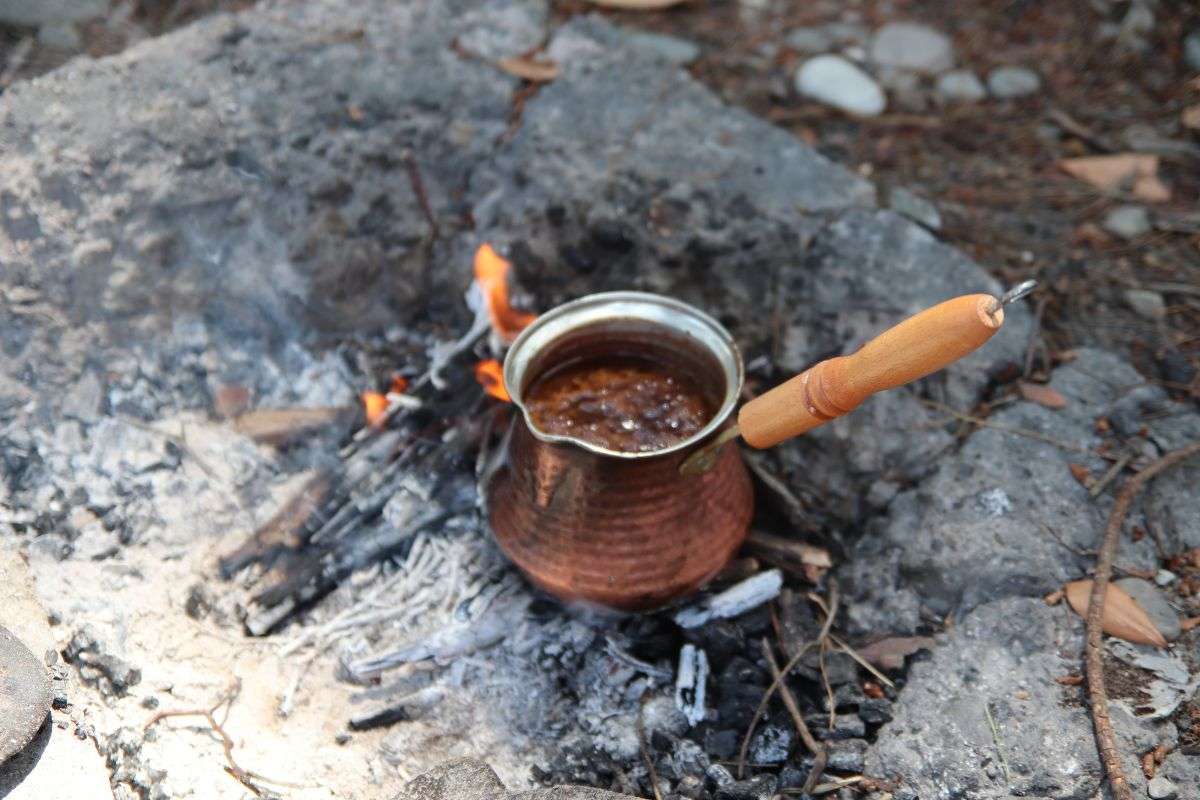
Bedouin etiquette dictates that you should drink three cups of coffee usually served in small cups with no handles if offered by your host. The first is for the soul, the second for the sword and the third is because you are a guest. If you want a refill, hand your cup back to the host. If you’ve had enough, shake the cup before handing it back. Even if you are not a massive coffee fan try to at least accept one cup to be polite.
Arak Punch
Drinking alcohol is forbidden under Islam but Jordan is more relaxed than some middle eastern countries and you will find alcohol being served in some big hotels and restaurants, particularly in tourist areas. Some supermarkets and convenience stores may also sell alcohol but be mindful that it is illegal to drink alcohol in public or to show signs of drunkenness in public. This includes hotel lobbies, the countryside or desert, on the beach, in cafes and so on.
Having said that, if you get the chance to try Arak Punch it’s worth jumping quietly off the wagon to try this anise flavoured drink which is not unlike Greek Ouzo. It’s rarely served without a range of middle eastern food dishes and often with barbecue or garlic sauce.
Our Explorer Chicks loved the punch when they tried it at the Cave Bar in Petra, dubbed the oldest bar in the world. Located in a 2000 year old Nabataean rock tomb this is my idea of really bringing history to life. Cheers!
Maftul/Maftoul
Maftul is a little like couscous but with larger balls made from whole wheat flour and all purpose flour rolled around a centre of bulgar which gives these tiny pasta pearls a unique earthy, nutty flavour.
The dish consists of maftul balls served with chickpeas and chicken pieces or beef cooked in chicken broth or vegetable stock, herbs and/or spices. It’s a very popular dish in Palestine where it is called maftoul or Palestinian couscous but you will find it pretty much everywhere in Jordan and other areas of the middle east too.
Soup
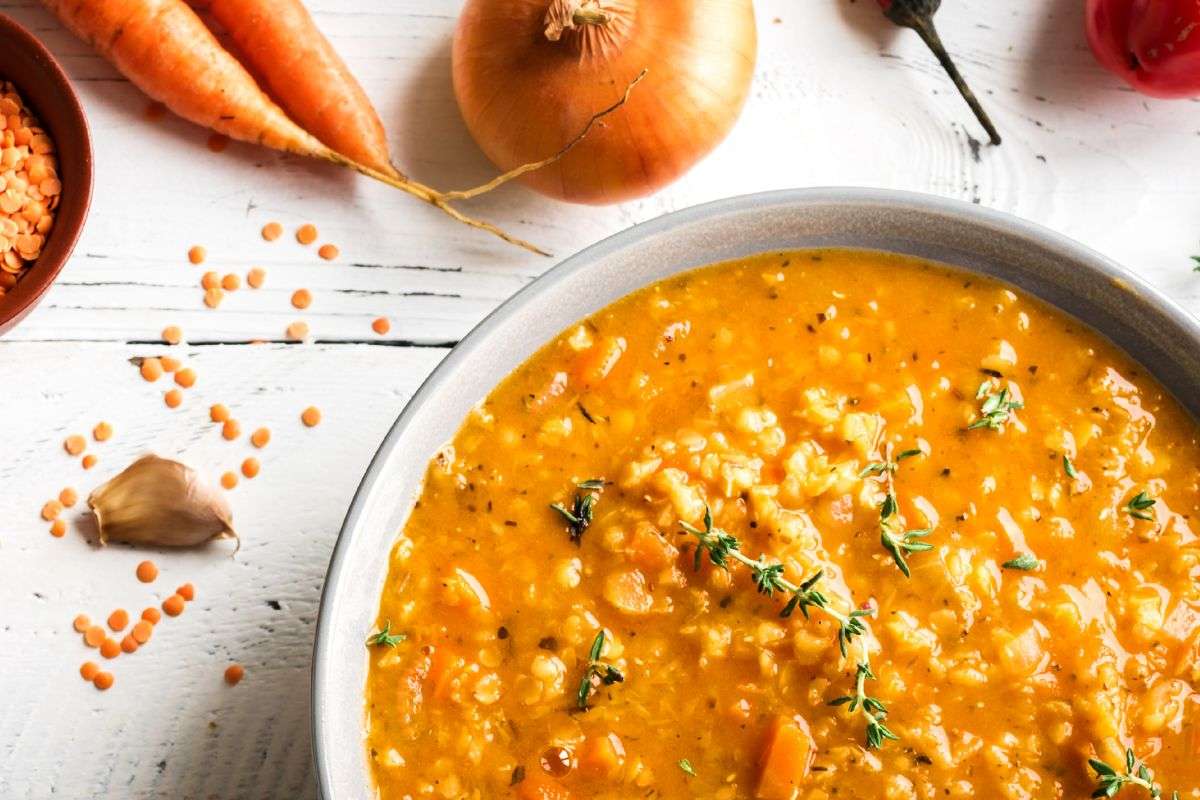
There are two types of soup in particular which are very popular in Jordan including a famous lentil soup.
Adas soup, a lentil soup is made with brown, red or green lentils cooked in meat or chicken broth and spices. Sometimes a vegetarian version may be found with potatoes, carrots, celery and onions.
Freekeh soup is made with fire roasted baby green wheat (freekeh), tomato sauce broth and spices. Green wheat is high in fibre and protein and will keep you full through a day of canyoning, culture and camel riding.
Ready for SHE-nanigans in Jordan?
Check out the Explorer Chick Adventure Co Facebook group to see pics of amazing women with fabulous smiles making friends, having fun, pushing the boundaries and proving that holidays can be so much more than lying by a pool worrying about your stretch marks being on show. Sign up for some fabulous SHE-nanigans on the next Jordan trip and set your social feed on fire with pics guaranteed to make EVERYONE envious!
Meet the Writer

Afra is an award winning journalist who has enjoyed many adventures including swimming with sharks, crewing hot air balloons and canyoning. She started creating online content ten years ago, diversifying after years writing for print publications. She loves travel, great food, and her family. Not necessarily in that order.
Favorite outdoor adventure: Snorkeling in the warm waters off the coast of Cyprus
More About Our Favorite International Destinations
- 7 Hot Springs in Uganda That You HAVE to Visit
- Best Castles of Scotland: Must-See Enchanting Castles
- 60th birthday trip ideas for mom
- What You Need To Know Before You Hike Rainbow Mountain Peru
- The Best Cycling Destinations in Croatia
- Best solo trips for women who love adventure
- Your Complete Itinerary of Things to Do in Jordan: An Adventurer’s Guide
- Iceland Insights: Where To See Puffins
- How to Symbolically Adopt a Gorilla to Support Wildlife Conservation

